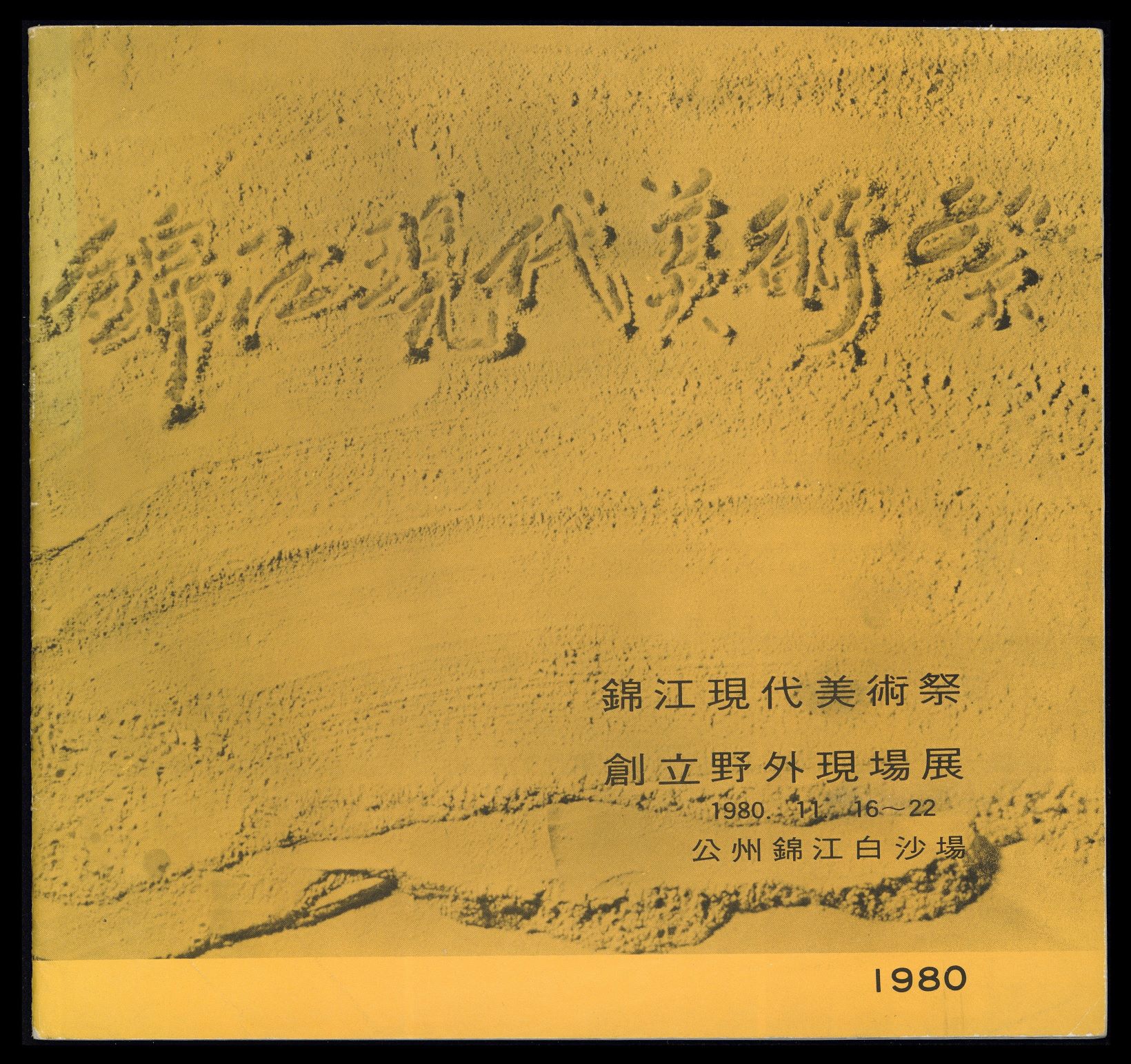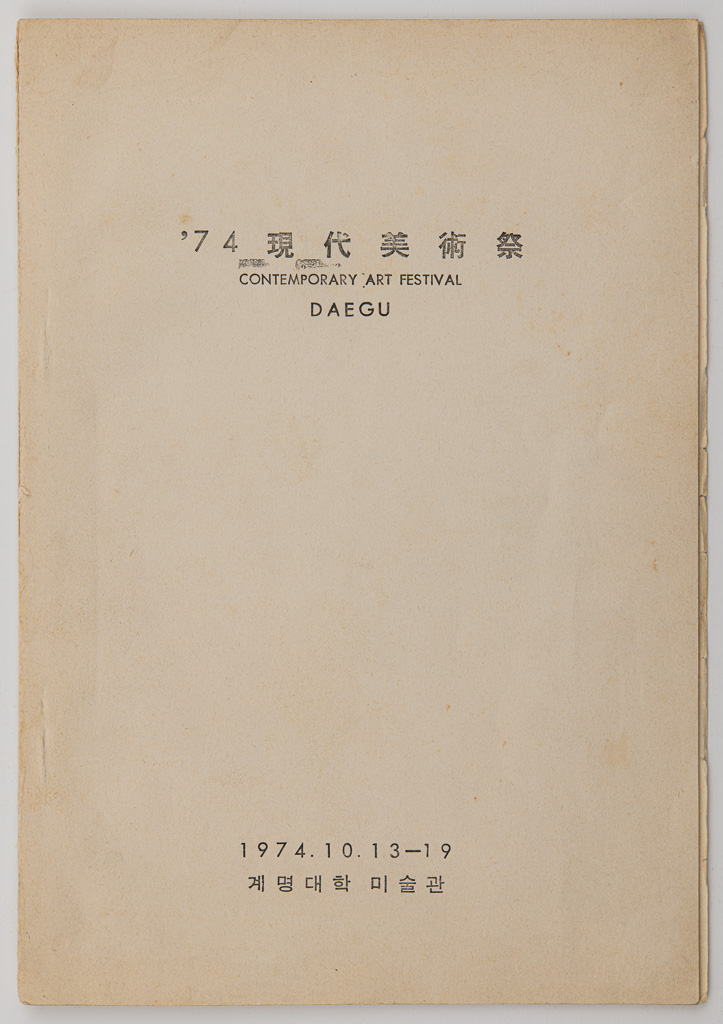
Geumgang Contemporary Art Festival—Inaugural Outdoor Exhibition, Brochure, 1980, MMCA Art Research Center Collection
Geumgang Contemporary Art Festival
* Source: MMCA
Related
-

Korean Nature Artists' Association·YATOO
Korean Nature Artists' Association·YATOO is an organization formed by artists based in Gongju city and the Geumgang River region in the 1980s with Nature Art as their slogan. Its main members include Rim Dongsik, Ko Seunghyun, Kang Huijung, Lee Eungu, Hong Oh-bong, Mun Jeong-gyu, Koh Hyeonhui, Kim Haesim, Jung Jangjig, and Lee Jonghyup. In 1980, the first Geumgang Contemporary Art Festival was held by the Geumgang River in Gongju-si, Chungcheongnam-do Province. In June 1981, a research group known as the YATOO Outdoor Field Art Research Society was founded under the leadership of Rim Dongsik. YATOO means “projecting the artist’s thoughts into nature.” Starting in 1983, the members of YATOO infused the concept of Nature Art into the results of their creative activities based on the encounter between humans and nature. Later, they renamed the organization as Nature Art Research Association · YATOO and began actively embarking on a path to Ecological Art that foregrounded questions of environment and ecology through installations, performances, videos, and photographic materials. Around this time, Rim left the organization due to disagreement with his colleagues. In 1995, the remaining members, such as Ko Seunghyun and Lee Eungu, renamed the organization The Korean Nature Artists’ Association · YATOO, which is still active in natural spaces near Geumgang River and Yeonmisan Mountain in Gongju. Since 1991, it has hosted the International Nature Art Exhibition, and since 2004, it has organized the Geumgang Nature Art Biennale.
-

Daegu Contemporary Art Festival
The Daegu Contemporary Art Festival was an annual contemporary art festival held in Daegu between 1974 and 1979. Three-dimensional works and paintings were frequently presented in the festival. The first exhibition (1974) and second exhibitions were primarily held in indoor exhibition halls, but the third exhibition expanded its venue to include both indoor and outdoor spaces. This third exhibition was divided into two parts, a major component of which was Lee Kangso, Park Hyunki, Chong Jaekyoo, Lee Jongyoon, and Jang Jeongjin’s collective outdoors piece titled Event in Nature. In addition, the Korean Art Association board members, including Park Seobo and Ha Chonghyun, came to Daegu to moderate a panel discussion about contemporary art and the concerns of avant-garde artists for the third exhibition. In the fourth exhibition, a significant inclusion was the video works of Park Hyunki, Kim Deoknyun, and Kim Youngjin, while in the fifth and final iteration of the festival, Lee Kun-Yong reenacted his piece Logic of Place, initially staged at the AG Exhibition (1975). In the contemporary period, The Gangjeong Daegu Contemporary Art Festival (Gangjeong daegu hyundae misulje), incepted in 2012, has continued in its tradition.






